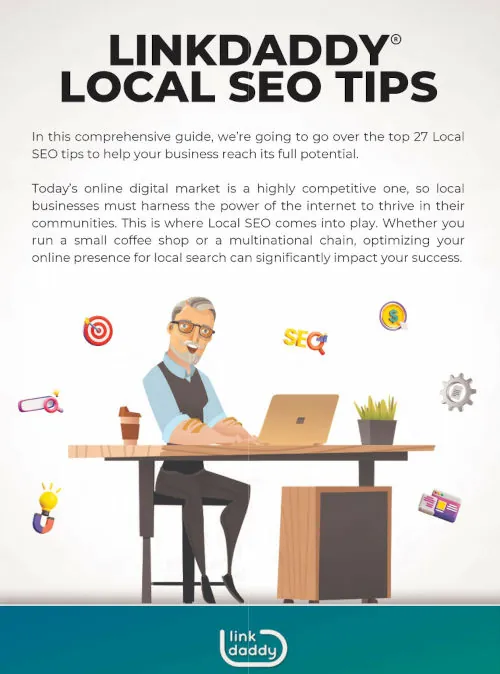
As the world of digital marketing evolves at a rapid pace, it can be challenging for businesses to keep up with the latest trends and techniques for optimizing their online presence. One area that has consistently remained important for businesses is search engine optimization (SEO). SEO practices help businesses improve their visibility in search engine results and attract qualified traffic to their websites.
While the specific tactics and techniques may change over time, the fundamental principles of SEO remain the same. In this article, we will discuss some SEO practices that are likely to still be effective in 2023 and beyond. By implementing these strategies, businesses can improve their chances of ranking highly in search engine results and reaching their target audience.
Search engine optimization (SEO) is the process of optimizing a website in order to improve its visibility and ranking in search engine results pages (SERPs). The goal of SEO is to attract qualified traffic to a website by improving its visibility for relevant keywords and phrases.
SEO is still important in 2023 because search engines continue to be the primary way that people discover and access information online. By optimizing their websites for search engines, businesses can increase their chances of being found by potential customers who are searching for their products or services.
SEO is used by businesses of all sizes, in a variety of industries. From small local businesses to large enterprises, SEO can be a powerful tool for driving traffic and sales to a website. It is especially important for businesses that rely on online sales or lead generation, as it can help them reach their target audience and achieve their marketing goals.
Some specific techniques and tactics used in SEO include keyword research and optimization, content optimization, link building, and technical SEO (which includes things like website speed and mobile-friendliness). By implementing these strategies and continually monitoring and adjusting their efforts, businesses can improve their visibility in search engine results and attract qualified traffic to their websites.
SEO Explained

SEO, or search engine optimization, is the practice of improving the ranking of a website on search engines like Google. The higher a website ranks on a search engine, the more likely it is to be seen by users. This is important because a higher ranking can lead to more traffic, which can result in more business, leads, and sales.
SEO has changed significantly over the years. In the early days of the internet, search engines used simple algorithms to rank websites based on factors like the number of times a keyword appeared on the page. As the internet has grown and become more complex, so has SEO. Today, search engines use sophisticated algorithms that take into account hundreds of factors when ranking websites.
Some of the factors that search engines consider when ranking websites today include the quality and relevance of the website’s content, the website’s structure and organization, the presence of keywords in the website’s content and meta tags, the website’s performance and loading speed, and the number and quality of links pointing to the website from other websites.
To optimize a website for search engines today, it is important to create high-quality content that is relevant to the website’s target audience, use keywords in a natural way throughout the website’s content, ensure that the website is well-structured and easy to navigate, and build high-quality links from other reputable websites. It is also important to monitor and track the website’s performance and make changes as needed to ensure that it continues to rank well on search engines.
Best SEO Practices

SEO, or search engine optimization, is the practice of improving the ranking of a website or webpage on search engines like Google. Good SEO practices aim to improve the user experience of a website and make it easier for search engines to understand and index its content.
White hat SEO refers to techniques and strategies that are used to improve the ranking of a website on search engines in a way that is ethical and follows the guidelines set by search engines. Some examples of white hat SEO techniques include:
Creating high-quality and unique content that provides value to users: This involves creating content that is informative, useful, and engaging for the target audience. It’s important to avoid duplicating content from other sources and to make sure that the content is relevant to the website’s target audience.
Using descriptive and relevant titles and meta descriptions for pages: The title and meta description are the text that appears in the search results below the page’s URL. It’s important to use descriptive and relevant text in these fields to help users understand what the page is about and to encourage them to click through to the website.
Using header tags (H1, H2, etc.) to structure the content on a page: Header tags are used to create a hierarchy of content on a webpage, with H1 tags being the most important and H2, H3, and so on being less important. Using header tags helps search engines understand the structure of the content on a page and can also make it easier for users to scan and read the content.
Making sure the website is easy to navigate and use: A website should be easy to navigate, with clear headings, menus, and links that allow users to easily find the content they are looking for.
Using internal and external links to support the content on a page: Internal links are links that point to other pages within the same website, while external links are links that point to pages on other websites. Using both types of links can help search engines understand the context of the content on a page and can also provide additional value to users by linking to relevant and useful resources.
Optimizing images by using descriptive file names and alt text: Image file names and alt text are used to describe the content of an image to search engines. Using descriptive and relevant text in these fields can help search engines understand the content of the image and can also make it more accessible to users who are using screen readers or have images disabled in their browsers.
Ensuring that the website is mobile-friendly and has a fast loading speed: Many users access the internet from mobile devices, so it’s important to make sure that the website is optimized for mobile and has a fast loading speed. This can involve using responsive design techniques and optimizing the size and number of images on the website.
Using social media and other channels to promote the website and its content: Promoting the website and its content through social media and other channels can help increase visibility and drive traffic to the website. This can involve creating and sharing content on social media platforms, participating in relevant online communities, and using paid advertising to reach a wider audience.
Worst SEO Practices

Black hat SEO refers to practices that are used to improve a website’s search engine rankings in ways that are not in line with the search engine’s terms of service. These practices are generally designed to manipulate search engine rankings rather than to provide a positive user experience. Some examples of black hat SEO tactics include:
Keyword stuffing: This involves cramming a large number of keywords into a website’s content in an attempt to manipulate search rankings. This practice involves adding an excessive number of keywords to a website’s content in an attempt to trick search engines into ranking the site higher for those keywords.
Hidden text: This involves using hidden text or links on a website in an attempt to manipulate search rankings. Hidden text is the text that is visible to search engines but is not visible to users. This practice involves adding text to a website that is the same color as the background of the page so that it is not visible to users but can still be read by search engines.
Cloaking: This involves showing one version of a website to search engines and a different version to users in an attempt to manipulate search rankings. This practice involves serving a different version of a website to search engines than is served to users. The version served to search engines is often optimized for specific keywords and is designed to rank well in search results, while the version served to users may be completely different and may not provide any value.
Link schemes: This involves buying or exchanging links in an attempt to manipulate search rankings. Link schemes involve obtaining links from other websites in an attempt to manipulate search rankings. This can be done through a variety of means, such as buying links, exchanging links with other websites, or participating in link schemes.
Doorway pages: This involves creating pages on a website that are specifically designed to rank well in search results, but that do not provide any value to users. Doorway pages are generally low-quality pages that are designed to rank well in search results for specific keywords, but that do not provide any value to users. These pages are often used to redirect users to other pages on the website or to unrelated websites.
Measuring SEO Results
There are many SEO tools available that can help you monitor and track key performance indicators (KPIs). Some popular options include:
Google Search Console, is a free tool provided by Google that allows you to monitor your website’s performance in search results, identify and fix technical issues, and submit sitemaps and individual URLs for crawling. Another Google tool is Google Analytics, a free web analytics service that provides insights into your website’s traffic, user behavior, and conversions.
SEMrush is one more paid tool that offers a range of features including keyword research, and competitor analysis tools. Ahrefs is another paid tool that offers a range of features including backlink analysis and site audit tools.
There are many KPIs that you can monitor to track the performance of your SEO efforts, including:
Organic traffic: This is the number of visitors who come to your website from search engines.
Keyword rankings: This is the position of your website in search results for specific keywords.
Backlinks: These are links from other websites to your website, which can help improve your search engine rankings.
Bounce rate: This is the percentage of visitors who leave your website after only viewing one page.
Conversion rate: This is the percentage of visitors who complete a desired action on your website, such as making a purchase or filling out a form.
Time-Tested SEO Techniques
Evergreen SEO techniques are strategies that are consistently effective over a long period of time and do not become outdated. These techniques can help improve the visibility and ranking of a website in search engine results pages (SERPs) and are an important part of a comprehensive SEO strategy. Some examples of evergreen SEO techniques include:
Creating high-quality and relevant content that provides value to users. This includes blog posts, articles, videos, and other types of content that are informative, engaging, and useful to your target audience.
Using targeted and relevant keywords throughout your website and content to help search engines understand what your website is about and the topics it covers.
Optimizing your website’s technical elements, such as its loading speed, mobile-friendliness, and security to improve its overall user experience and make it more attractive to search engines.
Building high-quality and relevant backlinks from other reputable websites, which can help improve the authority and credibility of your website in the eyes of search engines.
Ensuring that your website is easy to navigate and has a clear hierarchy, with a logical structure and well-organized content, to help search engines understand the context and relevancy of your pages.
Overall, the goal of evergreen SEO techniques is to create a website that is useful, relevant, and valuable to users, and that provides a positive and seamless user experience. By focusing on these elements, you can help your website rank higher in search engine results and attract more targeted traffic.
The Bottom Line
In summary, the future of SEO in 2023 will likely involve a focus on providing high-quality, relevant content that meets the needs and interests of users, while also optimizing website technical elements and building high-quality backlinks. Local SEO will also be important for businesses that serve a specific geographic area. The most successful SEO strategies will be those that prioritize user experience and value, while also taking into account the evolving technical aspects of search engine optimization.









